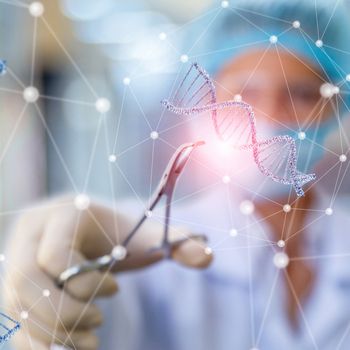LYS-SAF302 Linked to MPS-IIIA Biologic Response in AAVance Trial
New phase 2/3 findings meet investigators' hypotheses on the gene therapy's mixed benefits for heparan sulfate reduction.

Investigative human SGSH cDNA-carrying AAVrh.10 gene therapy olenasufligene relduparvovec (LYS-SAF302) has been associated with positive biological responses among patients with mucopolysaccharidosis type IIIA (MPS-IIIA), according to phase 2/3 findings.
In new data presented during late-breaking sessions at the WORLDSymposium 2021 Virtual meeting this week, investigators from the single-arm, international AAVance study reported that LYS-SAF302 did not, however, produce significantly reduced changes in serum heparan sulfate (HS)-derived disaccharaides in the cerebrospinal fluid (CSF) of patients with MPS-IIIA.
The findings are a mix in the progression toward gene therapy development for the pediatric neurodegenerative lysosomal disorder linked to early death, for which there is currently no available therapies.
Led by Michaël Hocquemiller, PhD, of Lysogene, the investigators assessed 19 patients with MPS-IIIA, dosed from February 2019 to March 2020. LYS-SAF302 was administered directly to patients’ brains with intraparenchymal infusion.
Hocquemiller and colleagues are observing patients in the ongoing assessment for changes in glycosaminoglycan (GAG) concentrations in the CSF and serum, which would provide evidence of the gene therapy’s in vivo biological activity and demonstrate AAVance’s proof of concept.
The first results showed a significant reduction in HS-derived disaccharide concentration in the CSF at 6 and 12 months post-treatment with LYS-SAF302, versus pre-treatment levels.
But in contract, there no observed statistically significant changes in serum HS concentrations after gene therapy treatment, and the treatment did not elicit change in CSF concentrations of the GAGs dermatan sulfate or keratan sulfate—indicating selectivity of LYS-SAF302 effect on HS metabolism.
“These results are consistent with the hypothesis that treatment with LYS-SAF302 leads to a strong reduction in HS originating from the brain parenchyma, with limited or no effect on HS-derived oligosaccharides entering the CSF from extra-parenchymal sources, such as choroid plexus or blood,” investigators wrote.
Hocquemiller and colleagues observed the CNS specificity of the therapeutic response was in line with the mode of administration used for LYS-SAF302. Additionally, they observed statistically significant reductions in secondary storage products GM2 and GM3 ganglioside in the CSF of treatment patients.
“The presented results provide the first evidence of positive biological responses to LYS-SAF302 treatment in patients enrolled in the AAVance trial,” they concluded.